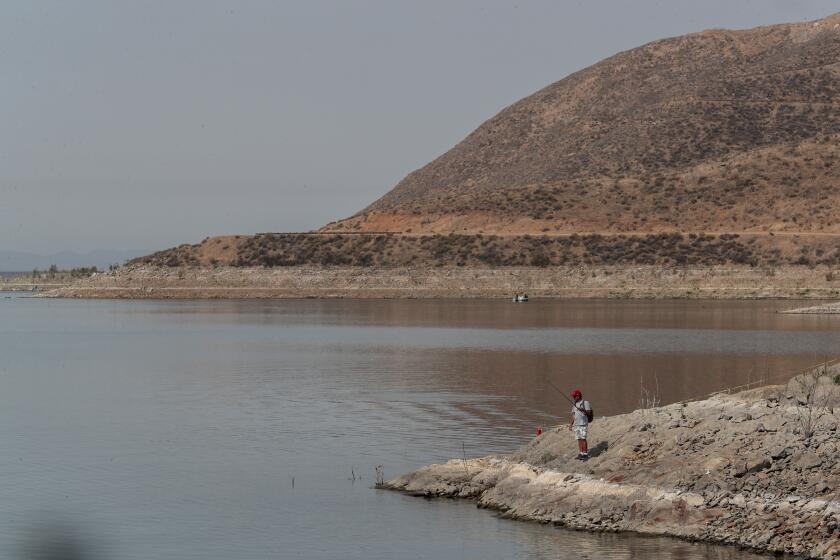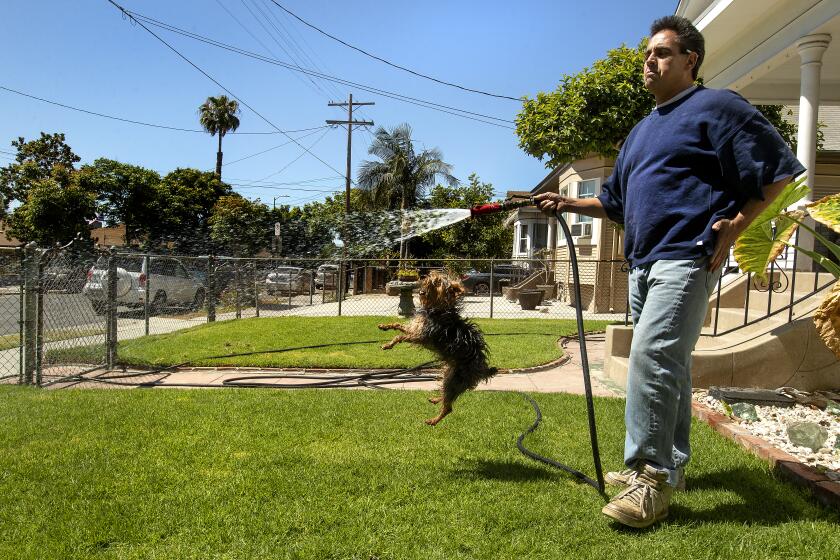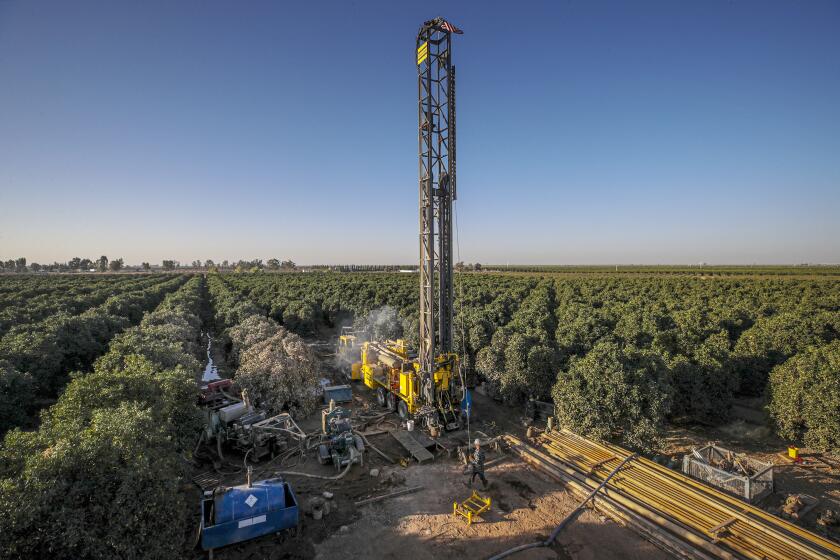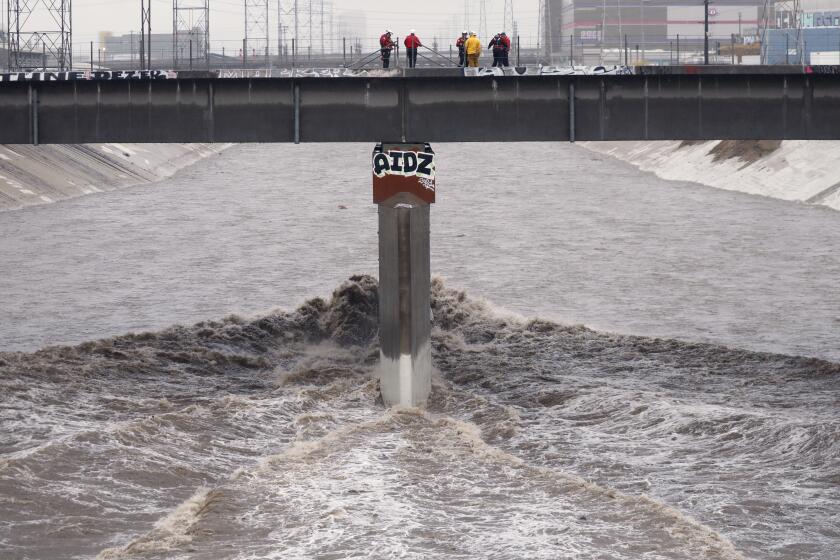Did California learn anything from the last drought? ‘Gambling’ with water continues
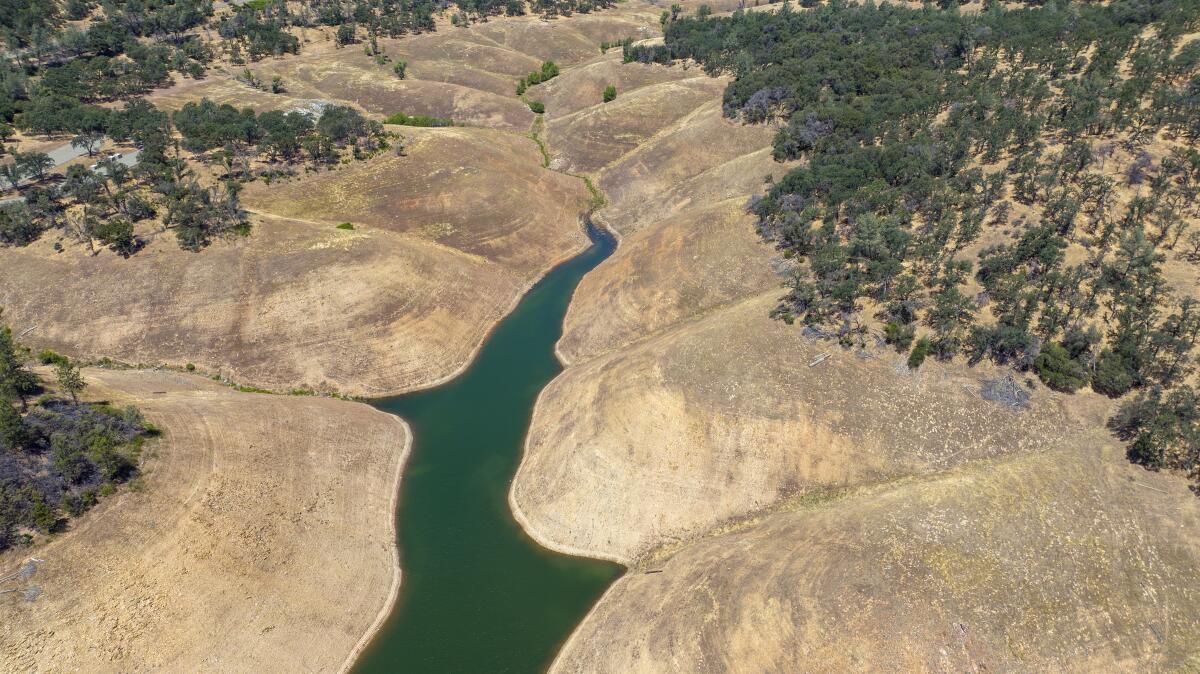
- Share via
The governor of California stood in a patch of dry brown grass as he made his proclamation:
“We’re in a new era. The idea of your nice little green grass getting lots of water every day — that’s going to be a thing of the past,” he said. “We’re in a historic drought, and that demands unprecedented action.”
But it wasn’t Gavin Newsom speaking — it was the state’s previous governor, Jerry Brown, and the year was 2015.
Seven years later, California is once again facing urgent calls for cutbacks as heat waves, record dryness and climate change converge to create critically short supplies. But what has California learned since then? Is the Golden State really ready to do this again?
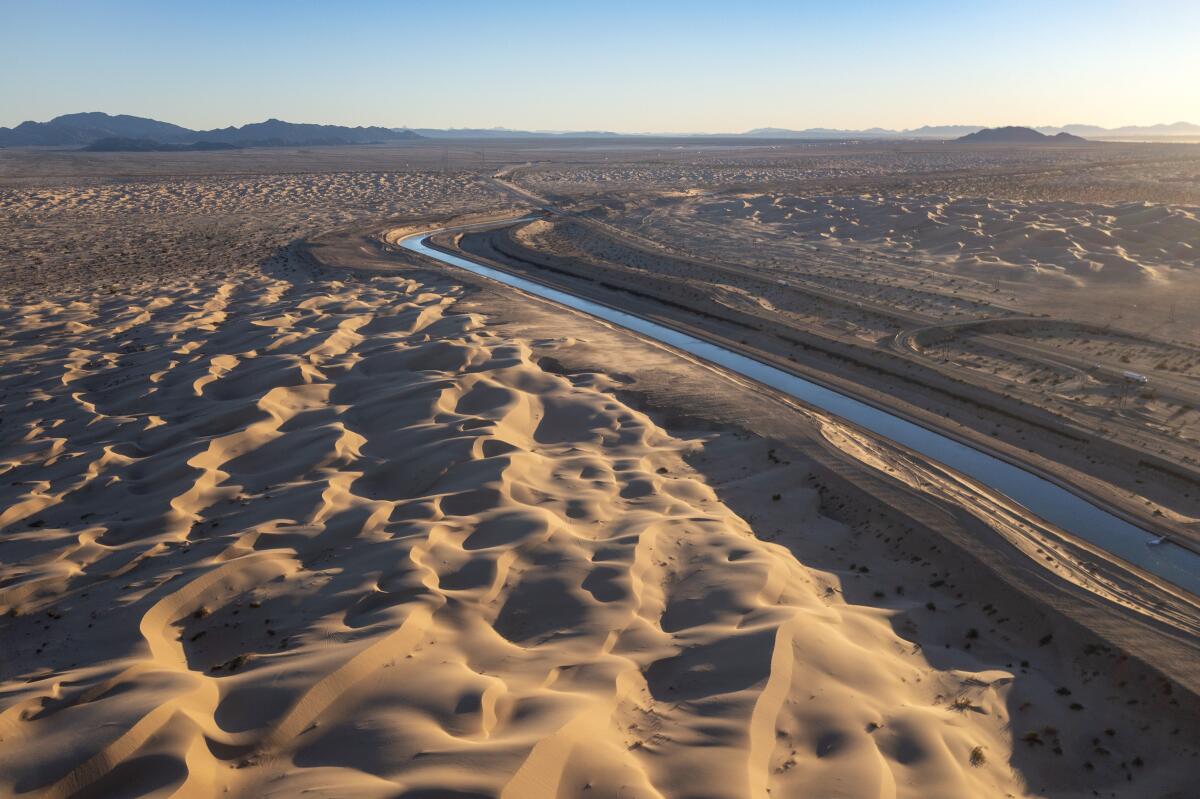
Yes and no, experts say. While some of the promises made during the previous drought — including greater investments in water capture and recycling — have been advanced or upheld, progress has been slow going and conservation is slipping. What’s more, a rash of well drilling is still threatening the state’s groundwater supply, and fish and forests are continuing to suffer as the region grows drier.
“In some ways, the way we use water is pretty much like gambling,” said Felicia Marcus, a fellow at Stanford University’s Water in the West Program. “We’re going to have to learn how to hold back in normal times to see us through the longer dry times — and more frequent dry times — under climate change.”
Here’s a look at where we stand today:
The South Coast hydrologic region, which includes Los Angeles, used 25.6% more water this April than in April 2020
CONSERVATION
In 2016, when then-Gov. Brown lifted the last statewide drought emergency, he also issued an executive order vowing to make water conservation a “way of life” in California.
The state largely responded to the call, maintaining daily per capita water use of around 90 gallons for the next several years, according to state data. But Californians have been slipping, and used about 18% more water in April compared with the same month in 2020, the year the current drought began.
Still, some experts said the big picture remains promising.
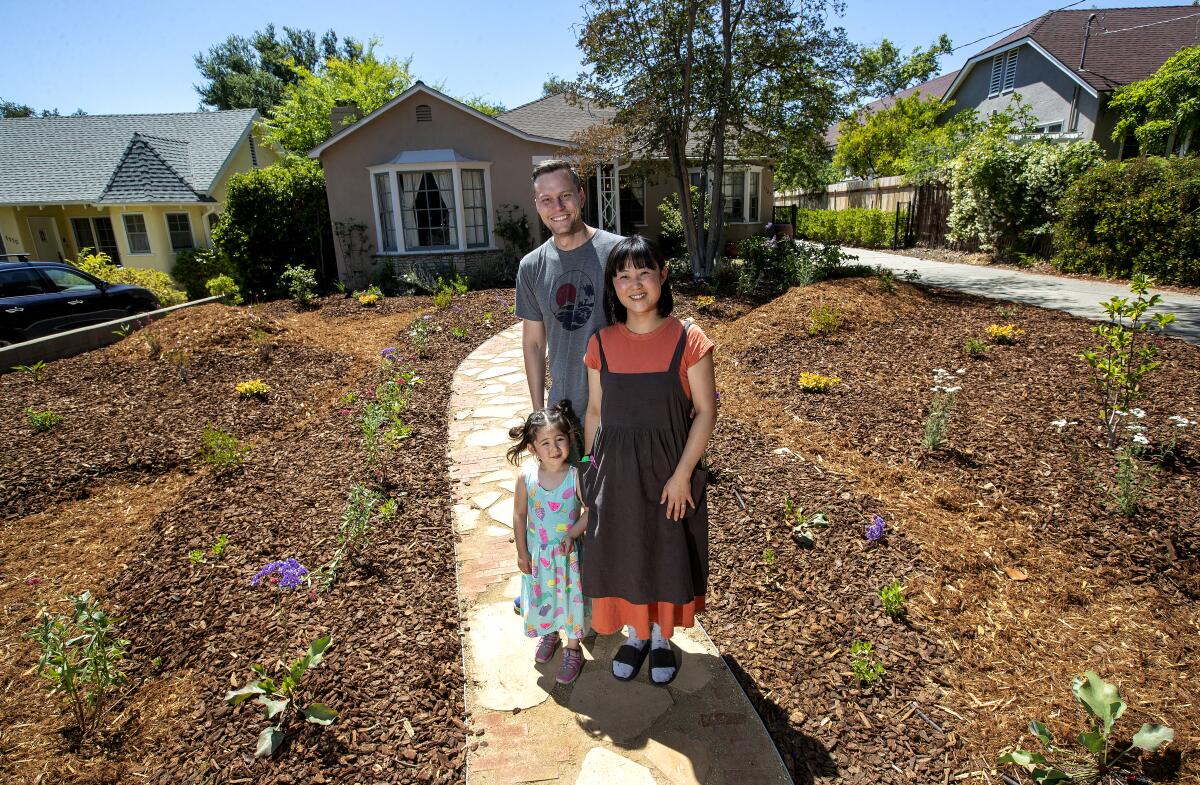
“We always backslide after a drought, but we backslide to a level which isn’t as high as it was before the drought, and that’s how we make progress in conservation,” said Jeffrey Mount, a senior fellow at the Public Policy Institute of California.
Indeed, many Californians have made lasting changes that have helped keep overall usage down, including upgrading appliances for higher efficiency and generally being more conscious of their consumption. A growing number of residents have also taken advantage of programs to help convert grass lawns into drought-tolerant landscaping.
What’s more, the last drought prompted a flurry of legislation that led to more stringent requirements for regional water suppliers, Mount said. Assembly Bill 1668 and Senate Bill 606, passed in 2018, required state agencies to establish long-term efficiency standards and to standardize their water shortage contingency plans.
“Droughts are really important because they push policy,” Mount said. “Having two major droughts within 10 years is pretty grim, but it’s pushing things along.”
From Boyle Heights to Bel-Air, it’s going to be a summer of brown grass and hard choices.
That doesn’t mean there’s no room for improvement, however. A recent study from the Pacific Institute found that California could still reduce urban water use by as much as 48% through a host of existing technologies and improved efficiency measures.
The Pacific Institute’s co-founder Peter Gleick decried the state’s recent backsliding and criticized authorities for not acting sooner.
“State officials have not rung the alarm bells the way they need to to help the public understand, first of all, that it really is a crisis, and second of all, that there are things they can do and should do,” he said.
Despite a California law intended to end over-pumping of aquifers, a frenzy of agricultural well drilling continues in the San Joaquin Valley.
GROUNDWATER
Perhaps the greatest advancement born of the last drought was the Sustainable Groundwater Management Act of 2014, a historic law intended to address over-pumping and help regulate the state’s supplies.
During dry periods, many Californians — agricultural users in particular — rely heavily on groundwater, especially when faced with cutbacks in deliveries from the state. But experts say the overdrafting of wells not only saps groundwater but also contributes to land subsidence.
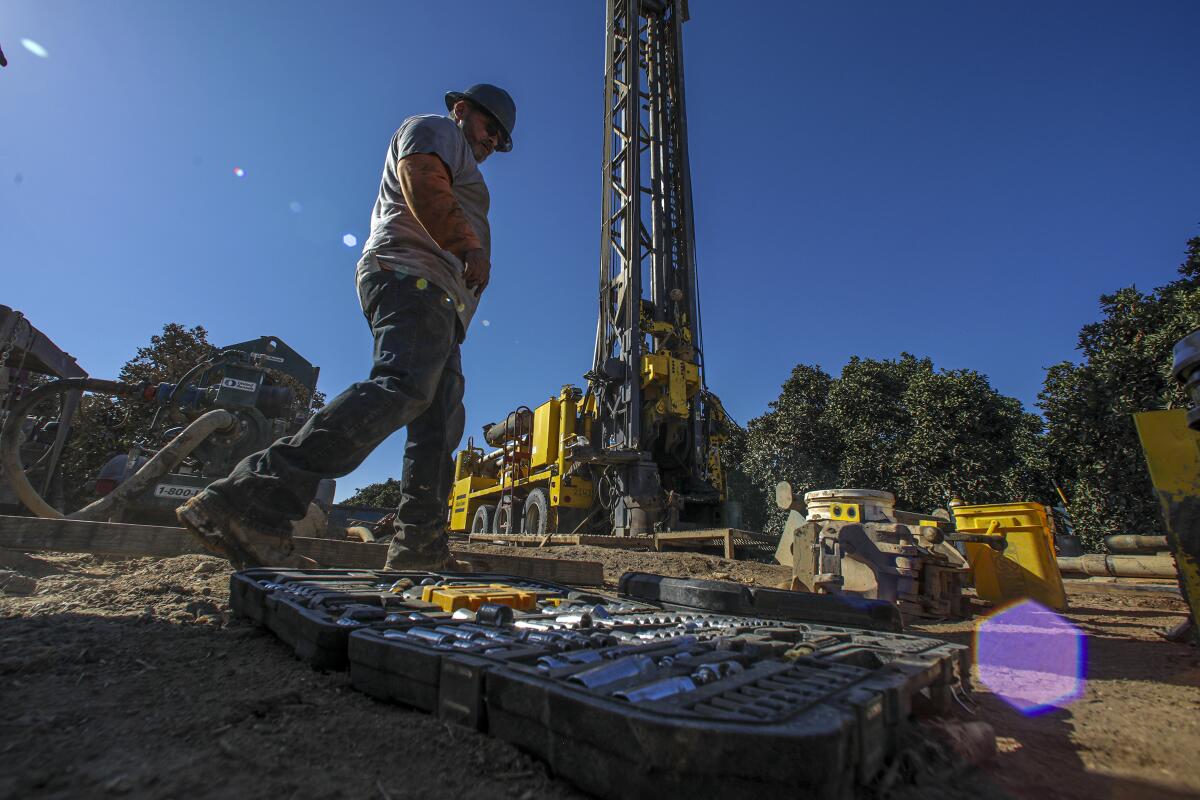
Jay Lund, co-director of the Center for Watershed Sciences at UC Davis, said California has made some progress when it comes to implementing regulations and better managing groundwater, but the state is still a long way from achieving sustainability.
“You have to find ways during the non-drought years to repay that extra water that you pumped out of the ground, and that’s a big change, and I don’t know that everybody understands that yet,” Lund said.
Part of the problem is that the Sustainable Groundwater Management Act laid out a timeline for implementation that spanned more than two decades, leading to a frenzy of well drilling even against the setting of two back-to-back droughts. Now, thousands of household wells in the Central Valley and other areas are at risk of going dry, and policymakers have acknowledged the legislation contained flaws.
In an effort to slow some of that drilling, Newsom this year signed an executive order requiring local groundwater agencies to verify that new wells are in accordance with sustainability plans. Also, proposed legislation, Assembly Bill 2201, seeks to make that change permanent.
But in the meantime, some California communities are already losing water while others are dealing with contaminated supplies.
Marcus, who also served as chair of the state water board during the last drought, remained optimistic about the Sustainable Groundwater Management Act, particularly because the state is using its authority to “call balls and strikes” on inadequate local management plans, she said.
“It’s more of an iterative process, so the jury’s out on whether it will work in the long run,” Marcus said, but “if it does work, it’s going to be more sustainable and more durable than another way of doing it. What we were going for in SGMA was long-term sustainability — not immediate drought fix.”
In 2018, L.A. County voters approved Measure W, a massive tax aimed at protecting beaches and improving water supply through storm water capture. Yet only $95.5 million has been disbursed for projects out of $556 million collected.
CAPTURE AND REUSE
There have been other promises too. In 2018, L.A. County voters approved Measure W, a massive tax aimed partly at capturing more storm water before it reaches the ocean.
This year, a Times review found that the county had disbursed only a fraction of the funds for the project, and that construction was lagging despite the urgent need to boost supplies of water. Though the project could eventually capture as much as 98 billion gallons of water annually, it might take as long as 50 years to build out the system, officials said.
Bruce Reznik, whose group Los Angeles Waterkeeper pushed to get the measure passed, credited the county for getting the massive project off the ground, but said he’d like to see more investments in smaller-scale residential-level projects in addition to the big-ticket items.
“The reality is we’ve made really big strides, but we are still largely dependent on imported water, which is drying up,” Reznik said. “That isn’t a lot of water security.”’
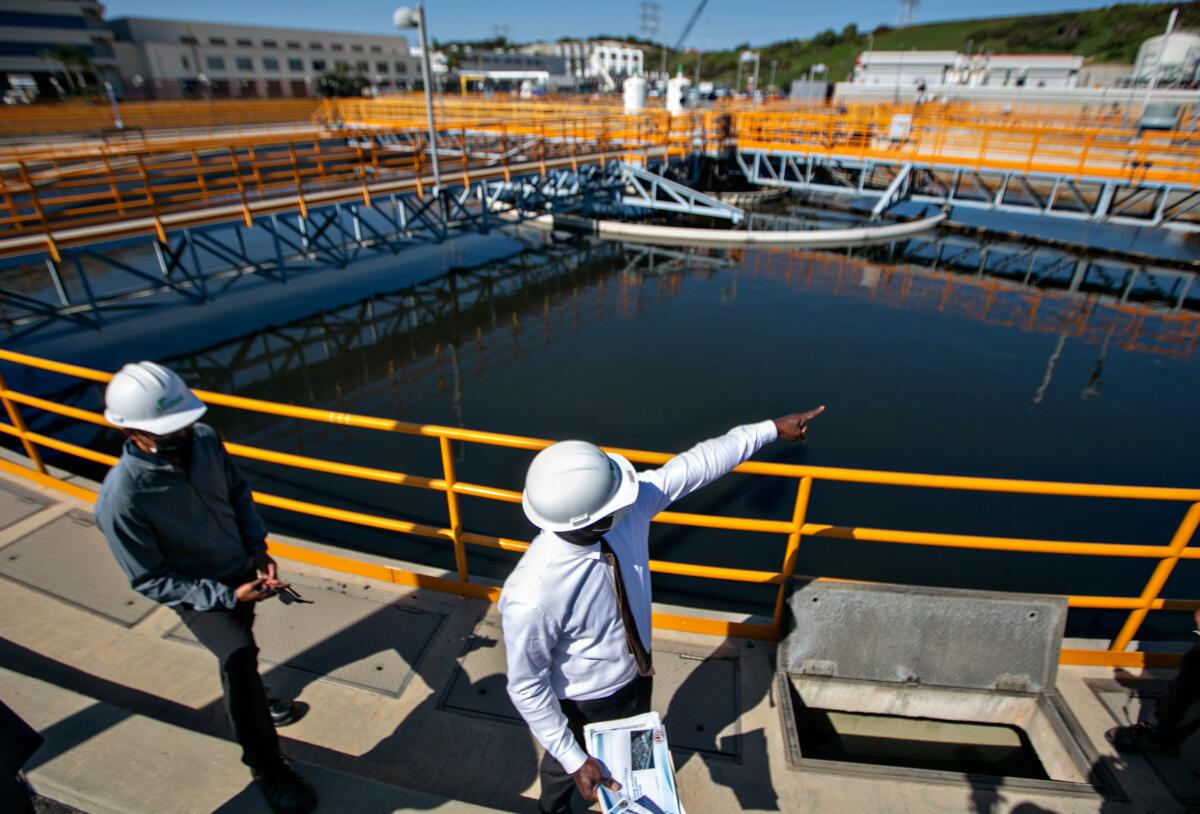
There are several other projects in the works to help boost the area’s supply, he said, including a major initiative from the Los Angeles Department of Water and Power called Operation Next, which aims to recycle as much as 100% of purified wastewater from the Hyperion Water Reclamation Plant by 2035.
DWP spokeswoman Ellen Cheng said it’s one of many such projects in development, including a groundwater replenishment project in the San Fernando Valley that, when completed, will recycle 100% of available wastewater supply from the Donald C. Tillman Water Reclamation Plant and ultimately produce drinking water for more than 200,000 Angelenos.
“The key point is that LADWP continues to make significant investments in several programs to further diversify the city’s water supply portfolio — which includes local groundwater, recycled water, storm water capture, water conservation and water-use efficiency,” Cheng said.
The agency is also developing projects to collect rainwater and runoff from East San Fernando Valley parks, as well as a direct potable reuse project near Griffith Park that will treat wastewater to drinking water standards, Cheng said.
Statewide, officials with the Department of Water Resources are continuing to fund advanced water infrastructure and resilience projects at local agencies to help “droughtproof” the state, officials said. At the same time, the California Coastal Commission recently rejected plans for a desalination plant in Orange County.
When asked to grade the region’s readiness for the current drought, Reznik offered a C-minus, but when asked to grade its efforts to get more water, he said it was “more in the B-plus range.”
“We’re in the right direction; it’s just we could use more — and sooner,” he said.
As dams and global warming push endangered California salmon to the brink, a rescue plan is taking shape — and a tribe pushes for recovering their sacred fish.
ENVIRONMENTAL MANAGEMENT
While the last drought shined a light on issues facing millions of residents, some of its most devastating impacts were felt in the state’s forests and rivers. Experts say vulnerable fish species, particularly salmon, have been pushed to the brink of extinction due to warmer waters and shrinking stream flows.
The problem was “absolutely exacerbated during the last drought,” said John McManus, president of the Golden State Salmon Assn.
“A big heavy flush of water in the spring basically doesn’t happen during the drought, and the ability to maintain cold water on the eggs of the fish that are incubating in the fall is compromised and often gets too warm,” he explained.
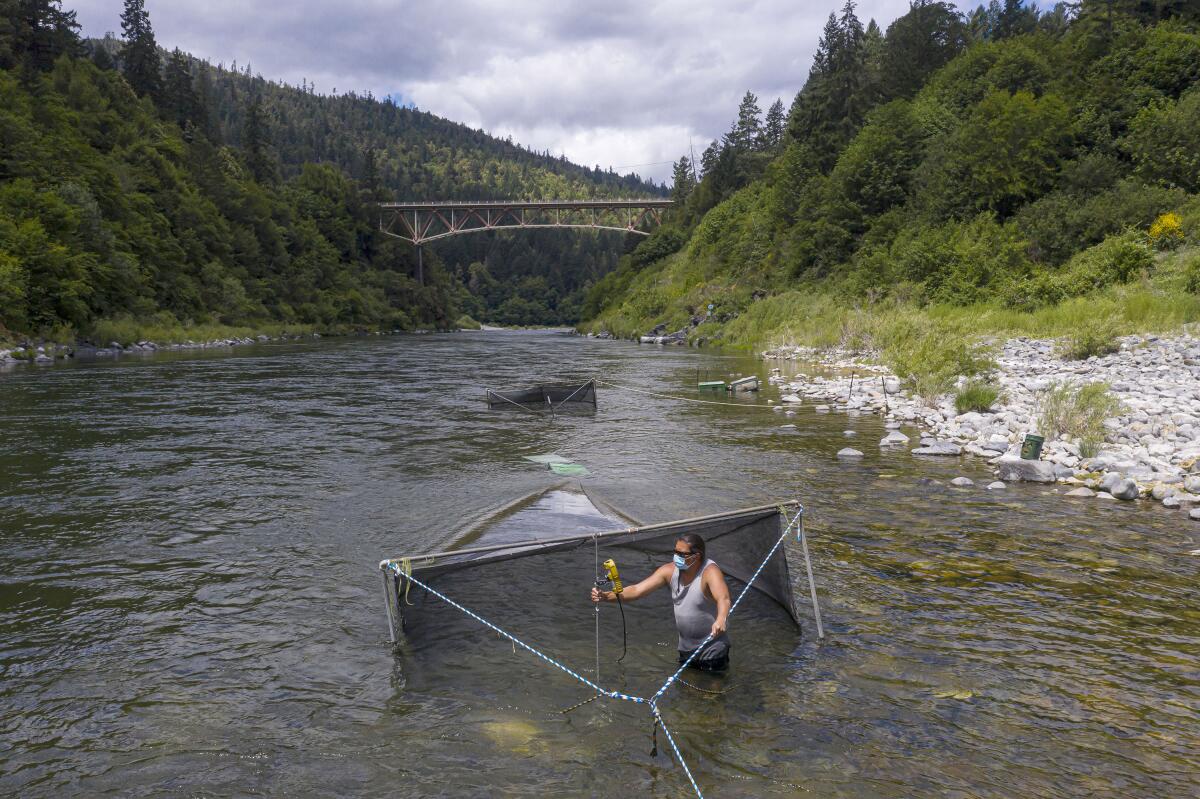
Though California is continuing to lose huge volumes of naturally spawned salmon as the state gets hotter and drier, officials have taken some actions to help mitigate the problem, McManus said, including managing strategic releases of cold water from reservoirs and trucking salmon to areas where they have a better chance of survival, though the concept is not without controversy.
“They’re reaching into their bag of tricks and saying, ‘Where else can we park some of these adult fish where they can spawn naturally and there’ll be cold enough water to keep eggs alive?‘” McManus said. Though winter-run salmon, in particular, remain endangered, there are many stakeholders within the state that are “quite worried about seeing an extinction on their watch,” he added.
But while salmon may benefit from some of these solutions, California’s forests are facing a harder road. During the last drought, an estimated 102 million trees that depend on soil moisture died, according to a 2018 report that Lund co-wrote. The tree mortality has dangerous implications for wildfires, erosion and public safety.
“For the forests, we’re kind of stuck,” he said, adding that it would take “many millions of acre-feet” of water to turn things around. “There are some of these environmental impacts that we just have to adapt to — that we’re not going to be able to push back the clock on — and that’s true for forests,” he said.
That may not be all bad, however, because many of the state’s forests have become overgrown during the last century due to wildfire suppression, he said.
But as with groundwater and green lawns, it does mean residents of the Golden State should get used to the idea of a California that looks considerably different.
“We have to find a way to prepare ourselves for the aridification, essentially, of much of California’s natural landscape,” Lund said.
More to Read
Sign up for Essential California
The most important California stories and recommendations in your inbox every morning.
You may occasionally receive promotional content from the Los Angeles Times.
